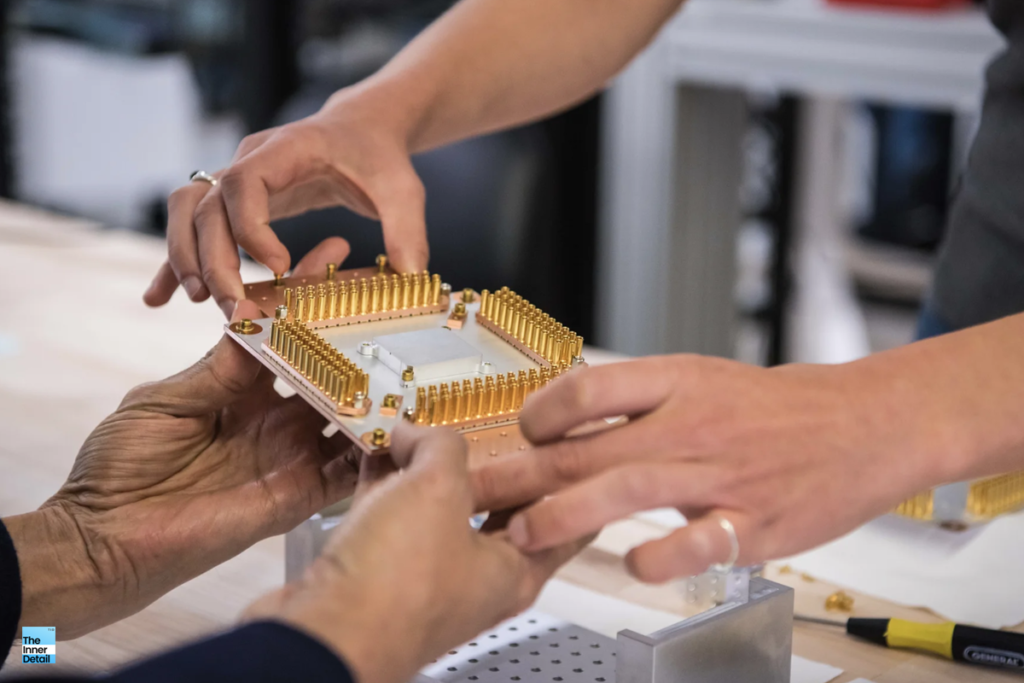At this time where artificial intelligence is ruling the tech, with companies incorporating the upgraded form of AI – generative AI to products and services, Google is a step ahead, sensibly making breakthroughs in a technology that is substantially much bigger than the currently existing intelligence and it is – Quantum Computing.
Google is futuristic on the technology & science and is gradually pioneering the sectors that hasn’t been even touched by its peers. According to reports, the tech giant had developed ChatGPT-like AI years ago, but repressed the subject owing to concerns of security and safety. After the release of ChatGPT, however, the firm revamped its AGI, unveiling its Bard AI and its manifestation in Google apps, products and services.
While still exploring the capabilities of AI, Google simultaneously is making breakthroughs in quantum computing – achieving quantum supremacy and quantum error correction, the first company in the world to do so.
But what does that mean?
Quantum Supremacy
Quantum computing is the outwitting concept that is still years away of being reality due to its arduous and perplexing nature. Normally in classical computers, which sits in everyone’s house, processes information as binary ‘bits’ either 0 or 1, but not both. For example, 20 in binary is 10100, taking 5 bits (number of digits in binary).
On the other hand, a quantum bit called ‘qubit’ can be both 0 and 1 at the same time, a property called superposition. So, having two qubits means four possible states and they grow exponentially than classical computers. This makes quantum computers to process much efficiently, leading to new complex computational possibilities, which might take even thousands of years in time to make it possible in classical computers.
This threshold where quantum computers solve a problem that would require an impractically long amount of time in a classical computer is called ‘quantum supremacy’. And Google had achieved quantum supremacy in 2019, CEO Sundar Pichai wrote.
Google’s Quantum Computer
Google’s Quantum machine successfully performed a test computation in just 200 seconds that would have taken the best-known algorithms in the most powerful supercomputers thousands of years to accomplish.
Progresses on quantum computing to make it a reality is not a sprint, but a marathon, says Sundar Pichai.
Albeit, it marks an important feat in the progress of actualizing quantum computing, a non-solvable hurdle had been bothering the researchers for years – quantum computers’ errors. Quantum computers are prone to more errors and scientists wasn’t able to decode the Gordian knot, as the travelogue to the destination doesn’t exist and the scientists are experimenting something different for paving the way.
And four years later accomplishing quantum supremacy, Google have found a solution to error correction in quantum computing too, in Feb 2023.
Google’s answer for Quantum Error-Correction
Google had been working on with physical qubits on its quantum processor one by one, for finding ways to quantum supremacy. Quantum computers work by manipulating these qubits in an orchestrated fashion called ‘quantum algorithms’. The challenge is that qubits are so sensitive that even stray light (even minimal amount of light) might cause calculation errors.
For a quantum computer to function perfectly, their surrounding environment like temperature, electronic noise or even light might hinder their ability to process correctly, leading to loss of quantum information.
“To bridge this gap, we will need quantum error correction,” Pichai adds.
Google’s Quantum scientists approached error-correction by encoding the information across multiple physical qubits to form a “logical qubit”. The researchers instead of processing physical qubits, grouped them to one logical qubit. As a result, Google made a logical qubit out of 49 physical qubits, and was able to outperform the one made from 17 qubits. Which further means, aligning physical qubits together reduces the error in the quantum computing, as the information in a logical qubit would seldom be lost than in individual physical qubits, when subjected to any noise.
Think of tutoring information to 49 members individually one by one and tutoring the same information to 49 members in a group, like in a classroom. Though if one of them forgets the information in a classroom, it’s possible to retrieve from others, however, it’s difficult to retrieve the information from 49 members one by one in case of individual tutoring and it’s also difficult to comprehend which one was right. Similar concept goes here, with members as qubits and the classroom being called ‘a logical qubit’.
It might seem simple, but practically is not, and Google lauds its team for this breakthrough in quantum computing progression, that no firm had achieved so far.
Related Posts
Uses of Quantum Computing
- Quantum computing can accelerate solutions for some of the unsolvable problems in the world, from climate change to disease.
- As the nature behaves quantum mechanically, quantum computing gives us the best possible chance of understanding and simulating the natural world at the molecular level.
- Quantum computing can be applied in design more efficient batteries, create fertilizer using minimal energy and would uplift the approach of energy generation, making it incredibly efficient.
- It could also figure out what molecules might make effective medicines, enabling breakthroughs in the drugs and medication.
While the hopes are prevailing, it’s actually years ahead for a real quantum computer to exist for usability. Google is optimistic about the mission and will continue to work towards a day of having quantum computers.
How long do you think for a real quantum computer to be available? Drop your thoughts in the comments..
Hope the page was useful!
(For more such interesting informational, technology and innovation stuffs, keep reading The Inner Detail).

